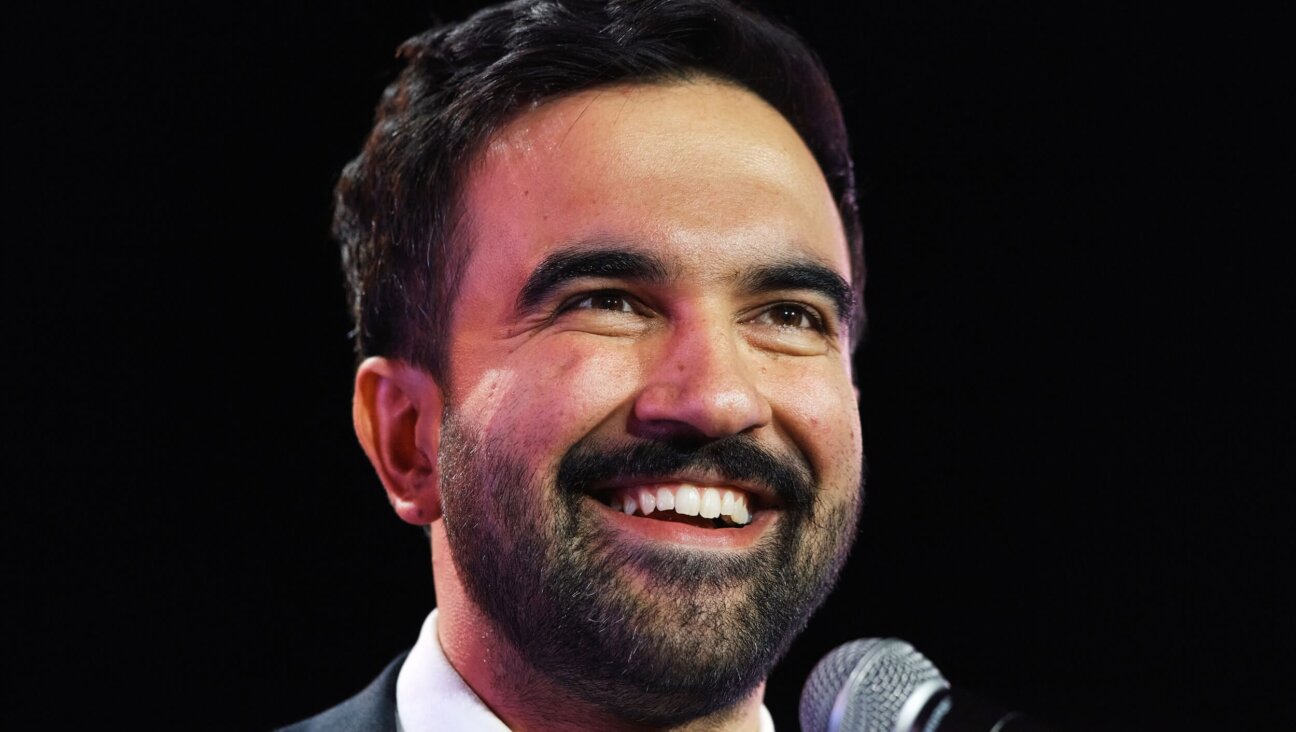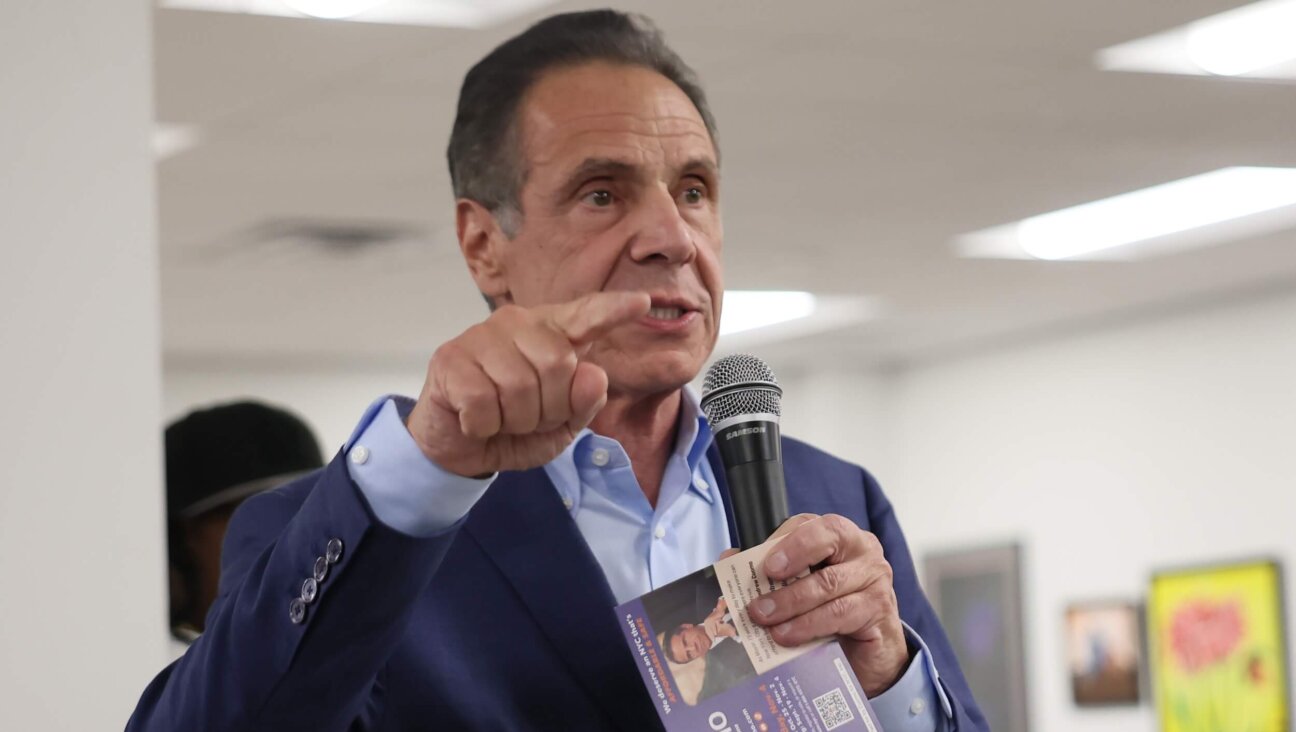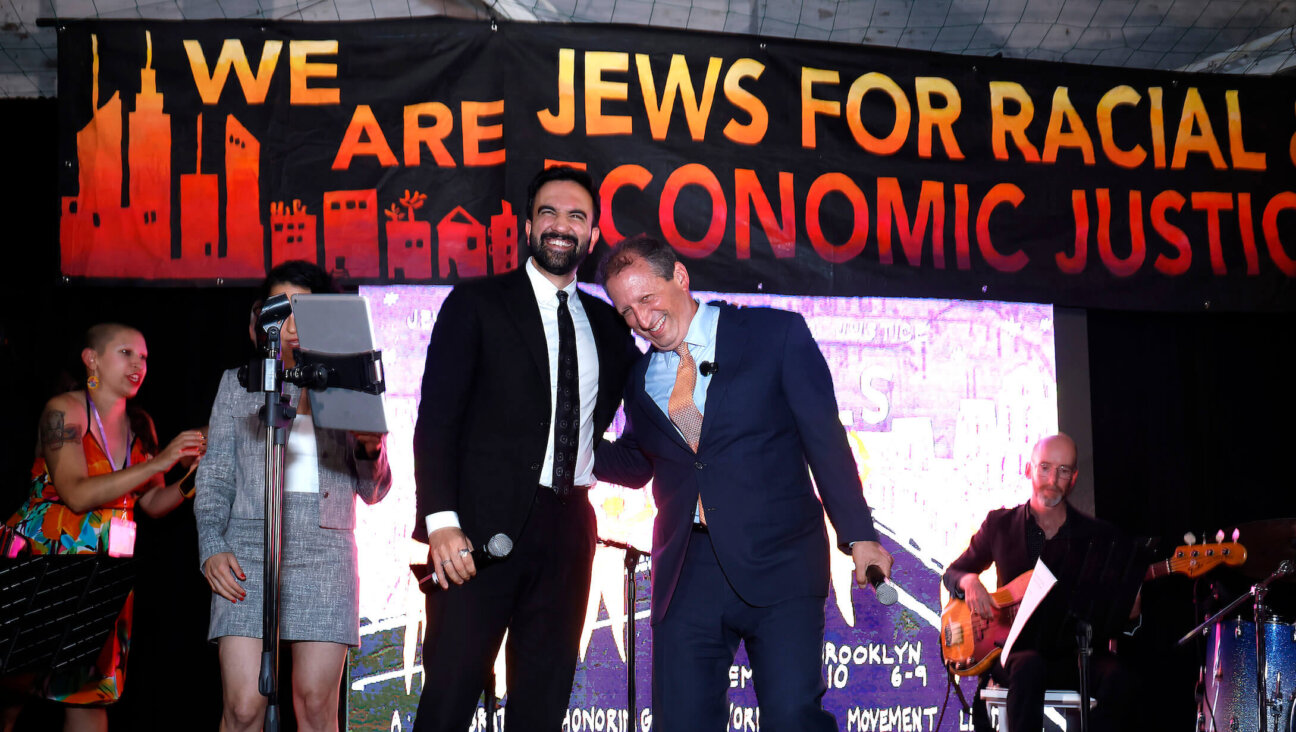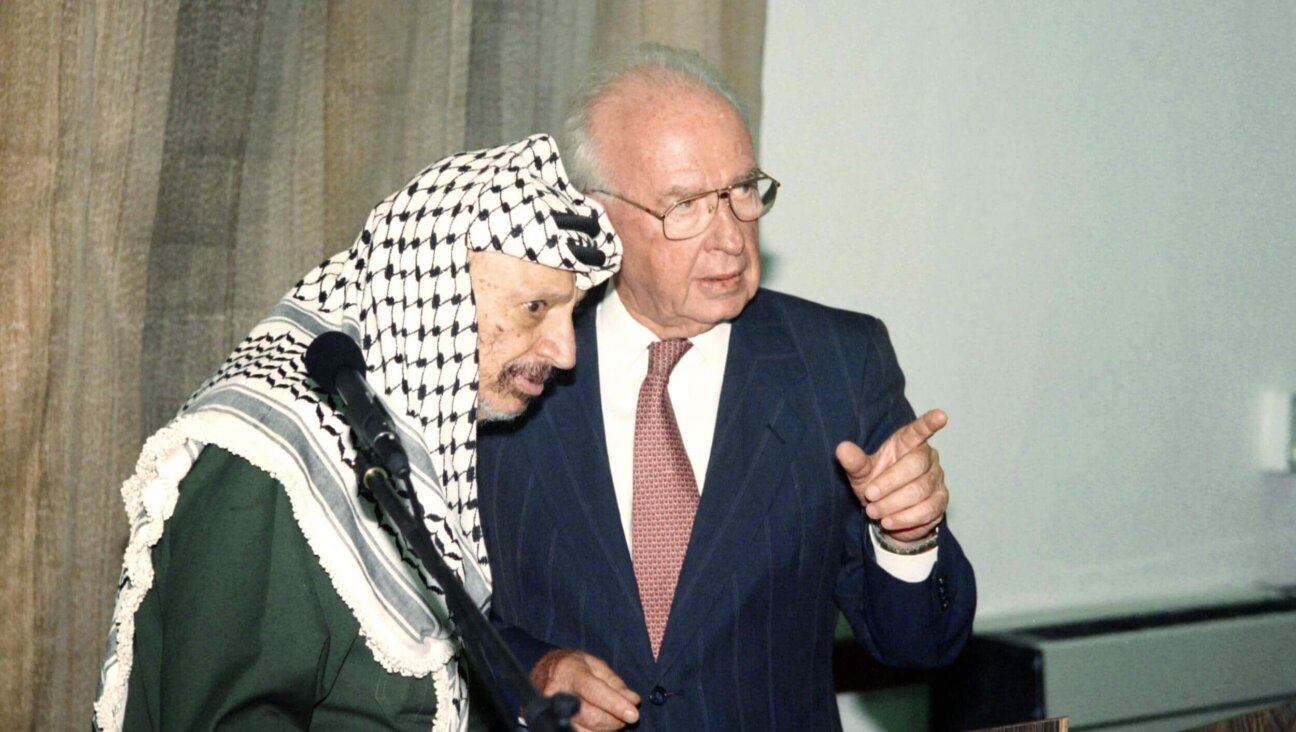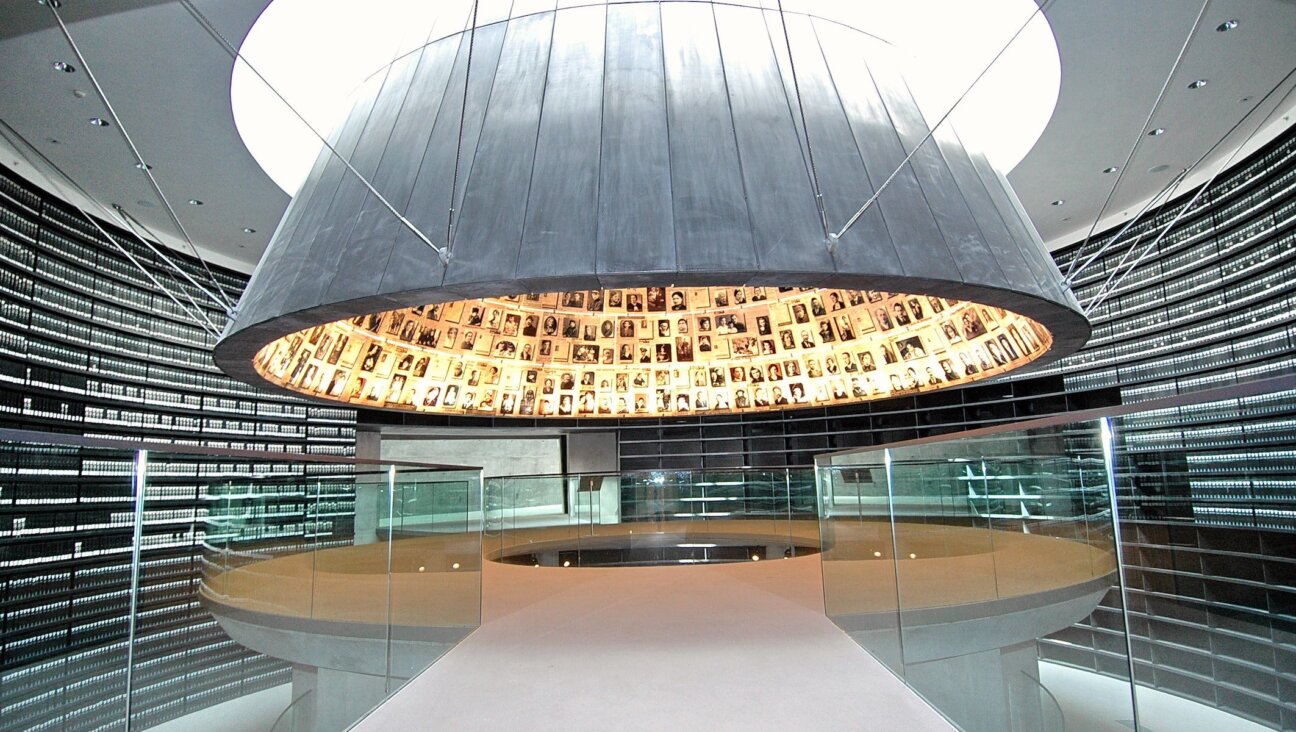Ultra-Orthodox Jews Spread Into Once-Black Brooklyn Neighborhoods

Graphic by Angelie Zaslavsky
If you’re looking to move to an apartment on or near Park Avenue, be prepared to break open the piggy bank. Prices are higher than ever and developers are squabbling over construction rights.
That’s Park Avenue, Brooklyn – not its swankier Manhattan namesake.
For decades, this derelict corner of New York’s most populous borough was the domain of dangerous street gangs and dilapidated industrial buildings. The name of its neighborhood, Bedford-Stuyvesant, was synonomous with urban decay and crime. But driven by the explosive growth of the Jewish population in neighboring Williamsburg, a stronghold of the Satmar hasidic sect, untold numbers of haredi Orthodox Jews recently have moved into the area, and now many consider it part of Jewish Williamsburg.
“Ten years ago there were no Jews living here,” said Moishe, a construction site manager of a large residential building who declined to give his last name. “Then they changed the zoning. Now it is going heavy.”
The changes in the neighborhood are among the consequences of the explosive growth of the Orthodox Jewish population in America’s most Jewish city. That growth is altering not just the composition of America’s largest Jewish community, but city neighborhoods, too.
A study released last month by the UJA-Federation of New York identified Williamsburg as home to the second-fastest Jewish population growth in New York City. About 74,500 Jews – mostly haredi Orthodox – lived there in 2011, up from 52,700 a decade earlier. The fastest-growing Jewish neighborhood of the city was Borough Park, another haredi Orthodox stronghold in Brooklyn. More than 130,000 Jews lived there in 2011, up from 76,000 in 2001. Together, these two areas accounted for two-thirds of the 10 percent increase in the number of Jews living in New York City, Long Island and Westchester County between 2001 and 2011, according to the study.
With these neighborhoods’ rapid growth has come new challenges. Affordable housing is increasingly scarce. The median real estate price in the Park Avenue area is just under $500,000, higher than nearly 80 percent of New York neighborhoods, according to Neighborhood Scout, a real estate data website. Meanwhile, average income in the area is lower than 90 percent of U.S. neighborhoods, according to the site.
“The prices are going up and up, and it’s becoming harder and harder for young families to buy in this neighborhood,” said Gary Schlesinger, the executive director of United Jewish Community Advocacy, Relations and Enrichment (UJCare), a haredi organization based in Williamsburg. “I personally have two married children. They have no prospects of owning land.”
As a result, the vast majority of Jews in Williamsburg – 77 percent, according to the UJA-Federation survey – are renters, the highest rate in the city. By contrast, only 51 percent of Jews living in the more affluent area known as Brownstone Brooklyn – an area that encompasses downtown Brooklyn and the much sought-after Park Slope and Carroll Gardens neighborhoods – are tenants.
The tough real estate market has enticed many haredim to quit the city for Jewish towns farther upstate, such as Kiryas Joel, community members say. Kiryas Joel now has more than 20,000 residents, according to the 2010 census, up from 13,000 in 2000.
For those who stay, real estate developers have been busy building in areas surrounding established haredi cores, pushing into adjacent neighborhoods like Bedford-Stuyvesant and Clinton Hill. The haredi migration can be tracked by the new construction, which often has specifically Orthodox amenities, such as staggered balconies that allow residents to build sukkahs during the fall harvest holiday with unobstructed views of the sky.
“This whole road and further down in deep Bed-Stuy and Clinton Hill is becoming hasidish,“ said Isroel Kogen, a tour guide with Hasidic Williamsburg Tour. “Look at the balconies and the bars on the windows. It’s typical haredi.”
The rapid expansion of the community has not always gone smoothly. The Broadway Triangle, a large parcel of land in north Brooklyn recently vacated by pharmaceutical giant Pfizer, has become a bone of contention between local haredim, blacks and Latinos. In 2006, the city granted the United Jewish Communities of Williamsburg (UJO), a haredi housing and social services group, the right to build on the formerly industrial tract. The UJO plans several eight-story buildings with mostly large units that critics say cater specifically to the needs of religious families.
But the Broadway Triangle Coalition – a group that includes blacks, Latinos and UJCare – is suing to block the plan, claiming that large apartments deliberately favor Jews over other groups that have, on average, smaller families. They also argue that haredi developers deliberately limit construction to eight stories because some Chasidic Jews will not ride in an elevator on the Sabbath.
“Our position is that there was a strategic political decision made to help deliver this land and opportunity without regard to the needs of the overall community,” said Romy Ganschow, a lawyer representing the Broadway Triangle Coalition. “By devising the plan the way that they did they did not have to give preference to residents in neighboring adjoining black community.”
Niederman said the apartments would be offered to anyone, regardless of race or religion, based on an open lottery. “The African-American but especially the Latino community” – because they have larger families – “have the same right to compete and will compete for these apartments,” he said.
Whatever the courts decide on the Broadway Triangle development, it will not solve the haredi community’s housing problems. “Even if we build these houses,” Niederman said, “it would be just a drop in the sea.”


